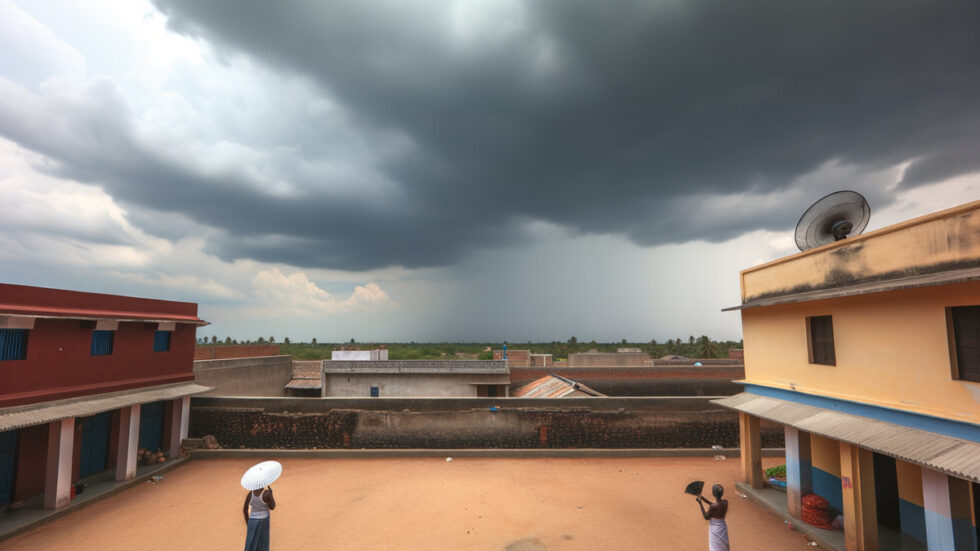
In what appears to be a wet and warm forecast for Tamil Nadu, meteorological reports indicate an uneasy mix of high humidity and elevated minimum temperatures, projected to be 2-4°C above the norm across various parts of the state. Despite the anticipated rainfall, which often brings a respite from the heat, these conditions are expected to lead to a period of increased discomfort for the residents.
The Indian Meteorological Department (IMD) has noted that the unusual weather pattern, characterized by this mix of high humidity and warmth, is somewhat atypical for this time of the year. This scenario is likely due to a combination of local climatic changes and broader atmospheric conditions affecting the region. “The presence of a trough of low at mean sea level from the Comorin area to southeast Bay of Bengal is causing enhanced moisture inflow towards Tamil Nadu,” explained an IMD official. This moisture influx, coupled with clear skies at night, is anticipated to prevent the heat accumulated during the day from dissipating effectively, leading to warmer nights.
The implications of these conditions are multifold. Health experts warn that high levels of humidity and heat can exacerbate existing health issues, particularly among the elderly, children, and those suffering from chronic diseases. The weather is also likely to impact daily activities, with discomfort during sleep and a possible increase in the use of air conditioning, which in turn could lead to higher electricity bills for households. Furthermore, the agricultural sector, vital to Tamil Nadu’s economy, could face challenges. Crops may require more water due to the elevated temperatures and increased evaporation rates, while humidity could foster the growth of pests and diseases.
In light of the forecast, state authorities have issued advisories, urging residents to take necessary precautions. These include staying hydrated, avoiding outdoor activities during the peak heat hours, and wearing light, breathable clothing. The government is also ramping up efforts to ensure that vulnerable populations have access to cooling centers and adequate water supplies.
As Tamil Nadu gears up to navigate this spell of uncomfortable weather, the situation underscores the ever-present need for adaptive strategies in the face of changing climatic patterns. It is a stark reminder of the broader implications of global warming and climate change, trends that are increasingly affecting regional weather patterns across India and necessitating a concerted response from both governmental and community levels.









